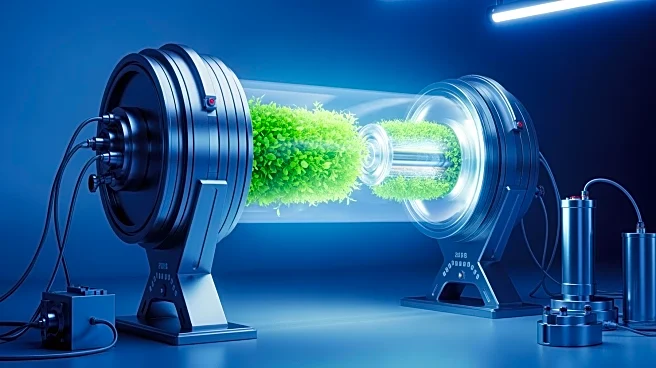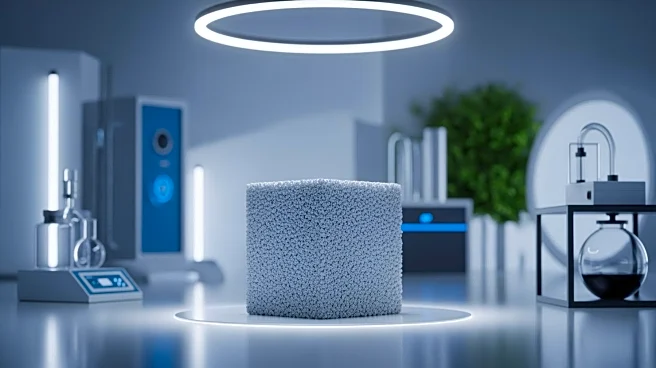What's Happening?
Researchers have synthesized a novel pyridine-thiazole hybrid adsorbent, known as MPHT 4, designed to effectively remove methylene blue (MB) dye from wastewater. The synthesis involved a one-pot reaction using pyridine carbaldehyde, thiosemicarbazide,
and phenacyl bromide, resulting in a compound with a high surface area and mesoporous structure. The adsorbent's performance was evaluated through various experiments, demonstrating a maximum MB removal efficiency of 86.7% at neutral pH. The adsorption process was found to be rapid, reaching equilibrium within 60 minutes, and was best described by the pseudo-second-order kinetic model. The study highlights the potential of MPHT 4 as an efficient and reusable adsorbent for dye removal in wastewater treatment applications.
Why It's Important?
The development of MPHT 4 is significant for environmental management, particularly in addressing water pollution caused by industrial dyes like methylene blue. The high efficiency and reusability of this adsorbent could lead to more sustainable and cost-effective wastewater treatment solutions. Industries that discharge dye-laden effluents, such as textiles and pharmaceuticals, stand to benefit from reduced environmental impact and compliance with regulatory standards. Additionally, the use of eco-friendly synthesis methods aligns with global efforts to minimize chemical waste and promote green chemistry practices.
What's Next?
Further research may focus on scaling up the production of MPHT 4 and testing its effectiveness on a broader range of pollutants. Collaboration with industrial partners could facilitate the integration of this adsorbent into existing wastewater treatment systems. Additionally, exploring modifications to enhance the adsorbent's capacity and selectivity for other contaminants could expand its applicability. Regulatory bodies and environmental agencies might also consider supporting initiatives that promote the adoption of such innovative technologies in pollution control strategies.
Beyond the Headlines
The introduction of MPHT 4 could influence the development of new standards for wastewater treatment technologies, emphasizing the importance of sustainability and efficiency. The success of this adsorbent may inspire further research into hybrid materials that combine multiple functional groups for targeted pollutant removal. This advancement also underscores the role of interdisciplinary collaboration in addressing complex environmental challenges, integrating chemistry, materials science, and environmental engineering.













